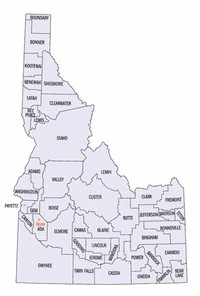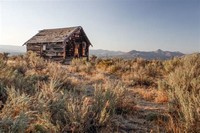Facts about Idaho
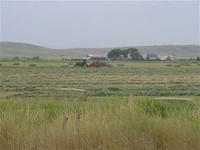
Expanding Idaho farming in the late 19th century led to private irrigation projects.
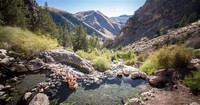
Summers in Idaho can be hot, although extended periods over 100 °F for the maximum temperature are rare.

Other important industries in Idaho are food processing, lumber and wood products, machinery, chemical products, paper products, electronics manufacturing, silver and other mining, and tourism.

Idaho is an important agricultural state, producing nearly one third of the potatoes grown in the United States.

Several Idaho Democrats have had electoral success in the House over the years, but the Senate delegation has been a Republican stronghold for decades.

Idaho has a bicameral legislature, elected from 35 legislative districts, each represented by one senator and two representatives.

Idaho also is home to three facilities of Anheuser-Busch which provide a large part of the malt for breweries located across the nation.

Idaho's industrial economy is growing, with high-tech products leading the way.

During the 1920s, Idaho experienced a farm revolt that led to the creation of the Progressive Party, which elected candidates in 1922 and controlled three county governments.

Humans may have been present in the Idaho area as long as 14,500 years ago.

According to the United States Census Bureau, in 2004, Idaho had an estimated population of 1,393,262.

The constitution of Idaho provides for three branches of government: the executive, legislative and judicial branches.
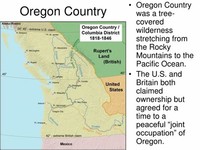
Idaho, as part of the Oregon Country, was claimed by both the United States and United Kingdom until the United States gained undisputed jurisdiction in 1846.
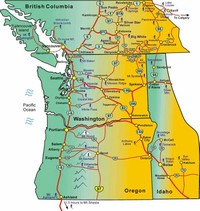
The State of Idaho is a state in the Pacific Northwest region of the United States of America.

The town of Hailey near Wood River had Idaho's first electric lighting and first telephone service.

In 1900, there were about 15 reform clubs in Idaho that pushed for progressive legislation.

Mormon pioneers made their first permanent settlement in Idaho in the 1860s as part of Brigham Young's plans for colonization.

The Idaho Legislature has been continuously controlled by the Republican Party since the late 1950s, although Democratic legislators are routinely elected from Boise, Pocatello, Blaine County and the northern Panhandle.

Idaho Congressional delegations have also been generally Republican since statehood.

During the 1890s, miners' support for silver monetization made Populism a political force in Idaho.

The Idaho State Historical Society preserves and promotes Idaho’s cultural heritage.

Nevertheless, Idaho completed a basic network of highways and electric railroads for a number of communities, including Boise.

The Salmon River—the "River of No Return," a salmon-spawning stream that flows through wilderness of extraordinary beauty—separates northern from southern Idaho.

Lead and silver strikes at Wood River (1880) and the Coeur d'Alene (1883-1884) produced a new source of wealth for Idaho.

Church was the last Idaho Democrat to win a U.S. Senate race in 1974.

Boise became a trade and transportation hub and two-thirds of Idaho farms were located in the Boise area by 1870.

Now known as the Idaho National Engineering Laboratory, the facility in 1955 provided energy for nearby Arco, the first American town to be lighted by electricity from a nuclear power plant.

Despite this lack of evidence for the origin of the name, many textbooks well into the twentieth century repeated as fact Willing's account that the name "Idaho" derived from the Shoshone term ee-da-how.

The Snake River—one of the longest in the US, extending 1,038 mi (1,671 km) across Wyoming, Idaho, and Washington—dominates the southern part of the state.

Regardless, a portion of Washington Territory, including Idaho County, was used to create Idaho Territory in 1863.

The Boise Metropolitan Area (officially known as the Boise City-Nampa, ID Metropolitan Statistical Area) is Idaho's largest metropolitan area.

Both public and private, these have also helped to increase the development of Idaho's enormous hydroelectric potential.

The Snake River Plain extends E-W across Idaho from Yellowstone National Park to the Boise area, curving around the southern end of the mountain mass.

Despite holding the governorship from 1971 to 1994 and producing influential figures like Senator Frank Church, the Democratic Party became increasingly irrelevant in Idaho.

The governor of Idaho serves a four-year term, and is elected during what is nationally referred to as midterm elections.

In 2004, George W. Bush carried Idaho by a margin of 38 percentage points and 68.4 percent of the vote, winning in 43 of 44 counties.
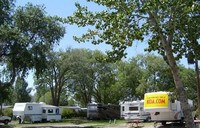
The state is especially inviting to campers, anglers, and hunters (Idaho has one of the largest elk herds in the nation).

Idaho's northern two-thirds consists of a mountain massif broken only by valleys carved by rivers and streams, and by two prairies: the Big Camas Prairie around Grangeville and the Palouse Country around Moscow.

The county was named after a steamship named Idaho, which was launched on the Columbia River in 1860.
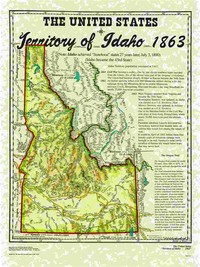
Between then and the creation of the Idaho Territory in 1863, parts of the present-day state were included in the Oregon, Washington, and Dakota Territories.

The rise of irrigated land led to the "selling" of Idaho in the East by communities and railroads.
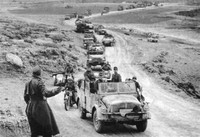
During World War II, 60,000 Idahoans—11 percent of the state's population—served in the armed forces.

Idaho's lowest point is 710 ft (217 m) near Lewiston, where the Snake River leaves the Idaho border and enters Washington.

Davis (of “Tearing Down Boise” fame) reported in the New York Times Magazine that Boise ranked as America’s sixth fastest growing city, and Idaho the nation’s fastest growing state.

Idaho borders the states of Washington, Oregon, Nevada, Utah, Montana, Wyoming and the Canadian province of British Columbia (the Idaho-BC border is 48 miles (77 km) long).

Several Idaho Republicans have won reelection to the Senate, but only Frank Church has won reelection as a Democrat.

Congress removed portions of the future territories of Montana and Wyoming in 1868, but Idaho was still too sprawling to be well administered.
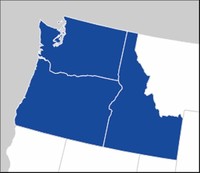
Six years later, Oregon became a state and southern Idaho was added to Washington Territory.
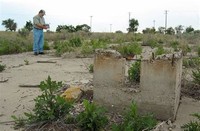
During World War I, Idaho contributed 20,000 men to the armed forces; produced food, minerals, and timber for aircraft; and purchased many war bonds and savings stamps.

The expansion of the network continued into the twentieth century, and by 1918, there were 2,841 miles of track in Idaho.
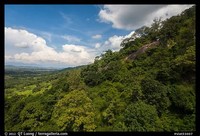
A verdant high-mountain area encroaches into the southeastern corner; the rest of Idaho's southern edge consists mostly of low, dry mountains.

In 1949 the Atomic Energy Commission built the National Reactor Testing Station in Southeast Idaho.
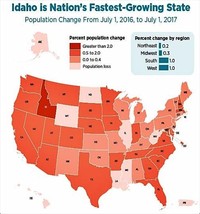
From 2004 to 2005, Idaho grew the third-fastest, surpassed only by Nevada and Arizona.

Hewlett-Packard has operated a large plant in Boise, in southwestern Idaho, since the 1970s, which is devoted primarily to Laserjet printers production.

Idaho is the only state that was likely named as the result of a hoax (the so called "Idahoax").

Idaho is a geographically diverse state, ranging from its high mountain peaks to its lush forests to its desert sand dunes.

In 1980, Idaho’s population was 54 percent urban; by 1990 57.4 percent; by 2000, 66.4 percent—all living on .4 percent of the state’s land mass.
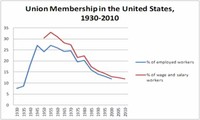
During the 1980s, union power declined, and Idaho's first right-to-work law was enacted.

The new territory included most of present-day Idaho, Montana, and Wyoming.

In 1853, Washington Territory was separated from Oregon and the future Idaho Territory was divided between them.

The first organized communities, within the present borders of Idaho, were established in 1860.

Other metropolitan areas in order of size are Coeur d'Alene, Idaho Falls, Pocatello and Lewiston.

In 1889, Idaho held a special convention and drafted a constitution that Congress approved, and a year later it became a state.

Idaho Territory had no formal settlements until the incorporation of Franklin in 1860.

Idaho also is home to three facilities of Anheuser-Busch which provide a large part of the malt for breweries located across the nation.

The Democrat C. Ben Ross was elected governor in 1930 and Idaho voted strongly for the Democrats in 1932.

The same year Congress created Colorado Territory, a county called Idaho County was created in eastern Washington Territory.
Idaho is an invented word! Mining lobbyist George M. Willing presented the name "Idaho" to congress for a new territory around Pike's Peak, claiming it was a Native American Shoshone phrase: "E Dah Hoe (How)," supposedly meaning "Gem of the Mountains."
Anderson Dam is known for its blue-ribbon fly-fishing. Idaho's Nez Perce Indians first bred the Appaloosa horse primarily for use as a war animal.
In Idaho law forbids a citizen to give another citizen a box of candy that weighs more than 50 pounds. The city of Grace in the Gem Valley is most famous for their certified seed potatoes. Blackfoot is home of the Eastern Idaho State Fair. The Dworshak Reservoir is over 50 miles long.
THE STATE NAME: Idaho was first presented to Congress, by mining lobbyist George M. Willing, as a name for a new territory around Pike's Peak. He told Congress that Idaho was a Shoshone Indian word that meant "Gem of the Mountains."Jul 28, 2017
Idaho's climate is diverse and influenced by weather patterns off the Pacific Ocean. Generally, the northern part of the state receives more precipitation than southern Idaho, which has warmer summer temperatures.
Official State Vegetable of Idaho. Idaho's rich volcanic soil, water from melting snow in nearby mountains, clean air, sunny days, and cool nights all combine to produce consistently high-quality potatoes that have made Idaho famous worldwide.
ListState, district or territoryOfficial (recommended by U.S. GPO)HawaiiHawaiianIdahoIdahoanIllinoisIllinoisanIndianaHoosier52 more rows
The short answer is no. A home address for a company, such as Boise, Idaho is no guarantee that the potatoes in the box are actually from Idaho. ... Some years much of the product may come from Idaho, but mostly it is now from Eastern Oregon. A guarantee is that you see the "Grown in Idaho" seal on the package or box.
We grow about 13 billion pounds of potatoes each year, and while most of them are Russet Norkotah or Burbank varieties, about 4-5% of our annual production is non-brown spuds. According to the USDA, Idaho shipped over 60 million pounds of yellow-type potatoes in 2012. That's a whole lot of non-russets!


